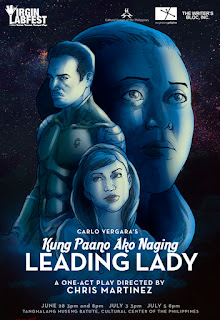From Script to Stage: What I Wrote and What It Looks Like
Below is a script snippet of my play, "Kung Paano Ako Naging Leading Lady." Give it a quick read to get an idea of what's going on. It's only a little over a minute, so it doesn't give away much. :-) Then check out the video at the end to see how it all went down on stage. The video was taken during the technical dress rehearsal so the performance was a few bits shy of total performance level. I just thought it was interesting to compare the original text with the actual staging. - - - - - - LEADING MAN She’s only here because you’re helping her out, I get that. If she were here to steal something, that’s going to be a problem. But now the only problem I see is her English. VIVA I am efficiently acclimatized to English, sir! LEADING MAN Yes, yes, and we’re so proud of you. MELY Viva, siguro doon ka na muna sa kuwarto. VIVA Sige, ate. Ginulo ko na ang buhay mo. MELY (to LEADING MAN) I will just bring her to my room. VIVA Hindi na, ate. Mahah



